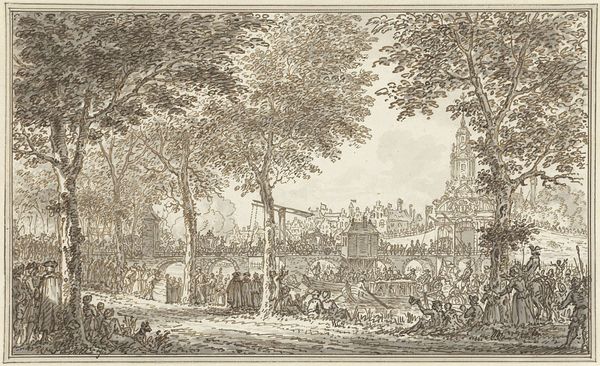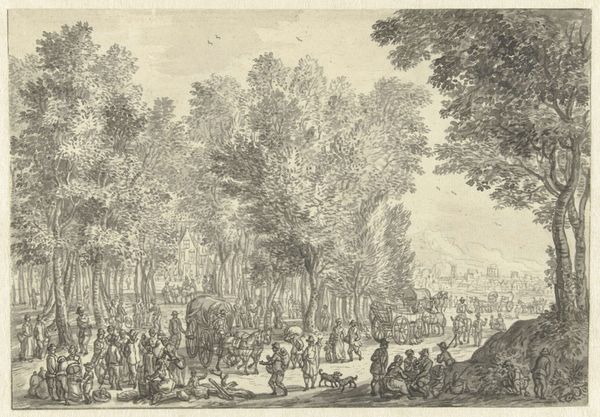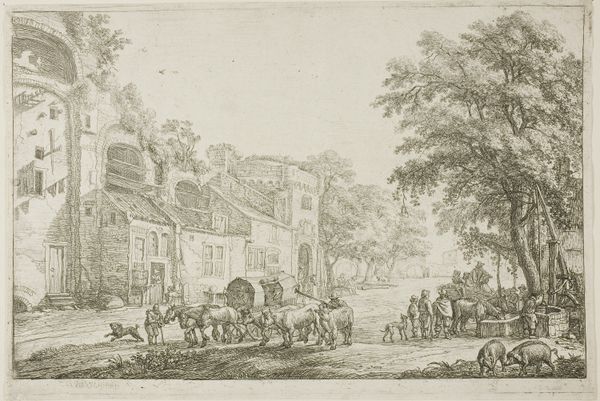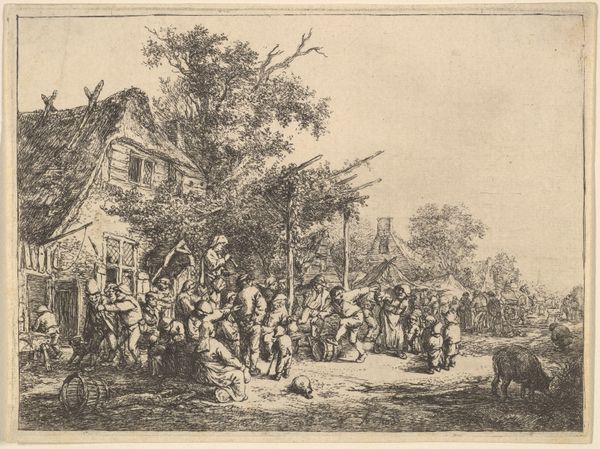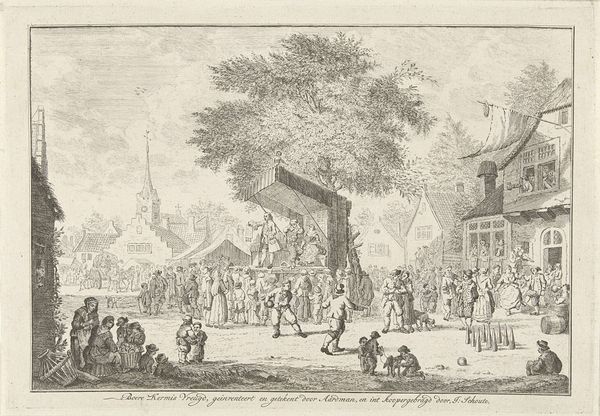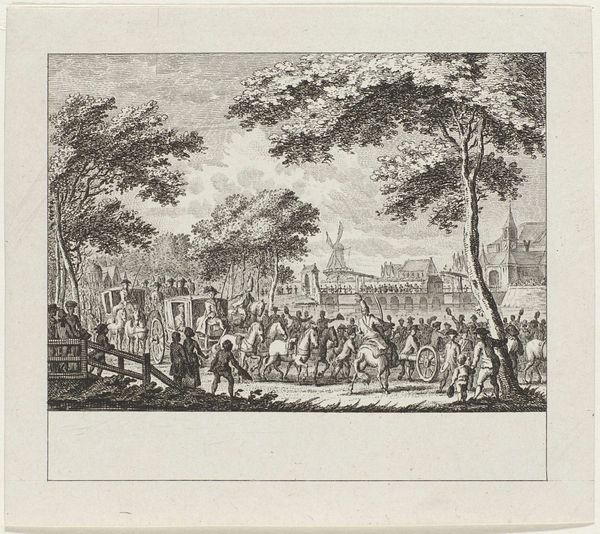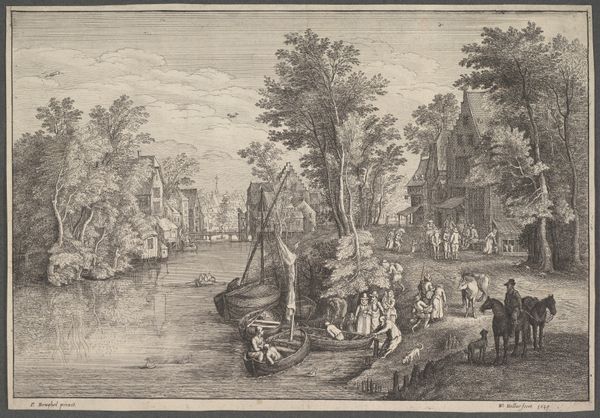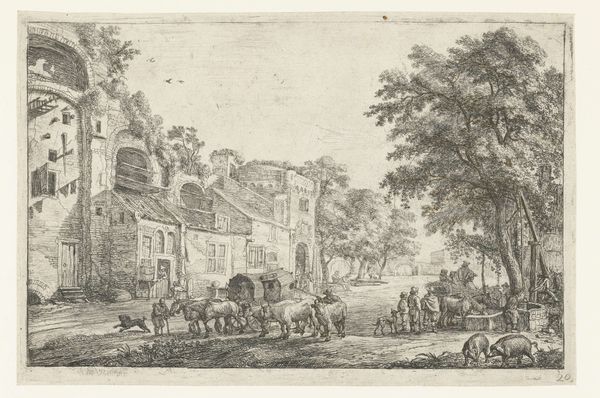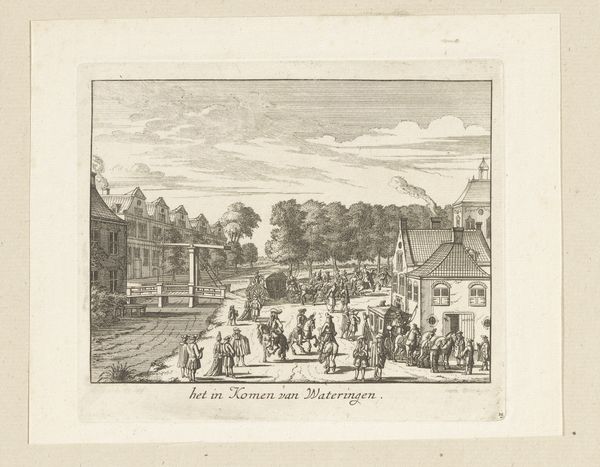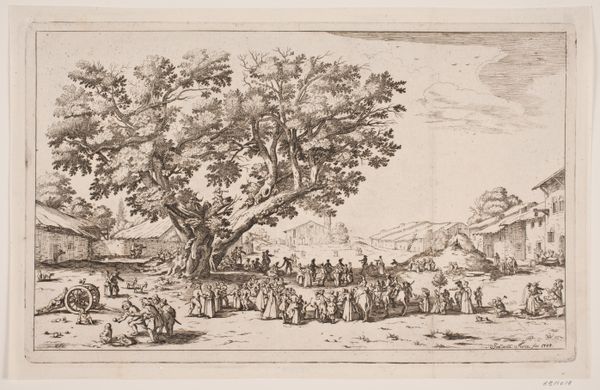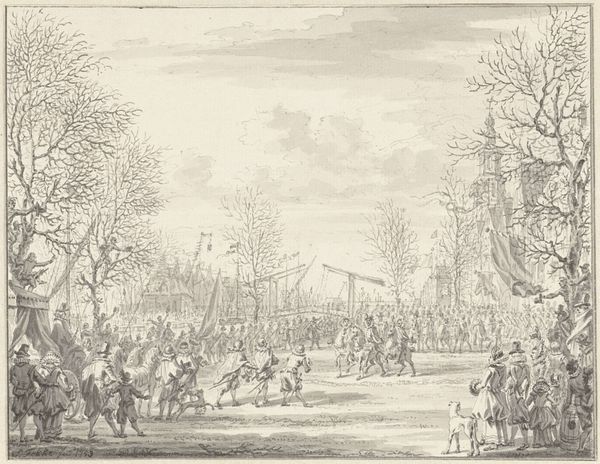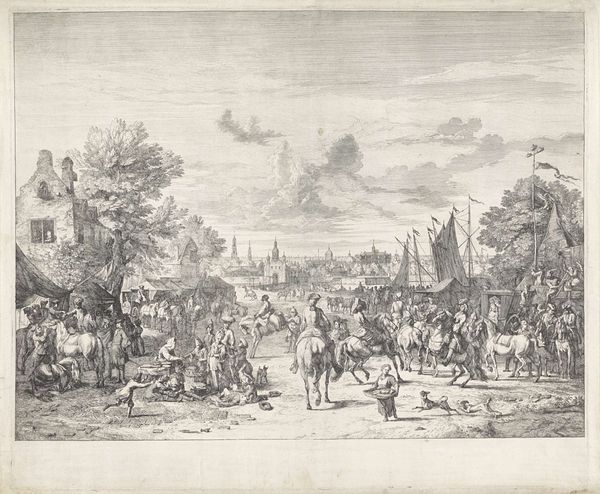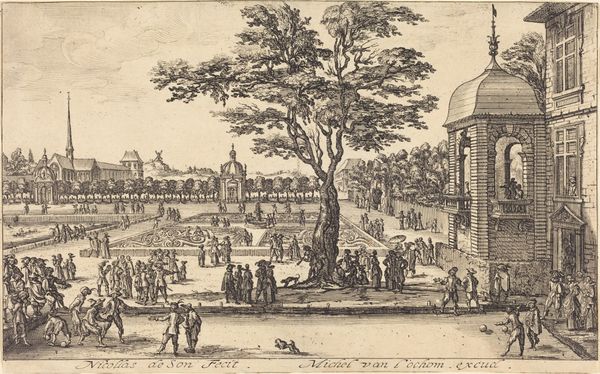
Aankomst van Willem V en Wilhelmina van Pruisen bij de Haarlemmerpoort, 1768 1768 - 1769
0:00
0:00
Dimensions: height 180 mm, width 259 mm
Copyright: Rijks Museum: Open Domain
Editor: So, this etching by Simon Fokke, from around 1768 to 1769, is called "Arrival of Willem V and Wilhelmina of Prussia at the Haarlemmerpoort." It depicts a very crowded scene, a lot going on. What strikes me is the way it seems to stage the landscape—almost theatrical in its presentation of a political event. What do you see in this image? Curator: This staging is precisely where its power lies. Beyond just a depiction of an event, Fokke is consciously constructing an image that speaks to ideas of power and legitimacy. Look how the city, symbolized by the gate and church tower, literally frames the arrival. Willem and Wilhelmina are not merely entering a city; they are entering into its established history and claiming their place within it. Do you notice the symbolic role that trees play? Editor: You mean the placement of the trees on the left? I noticed that but didn't understand how they might be read. Curator: Exactly! The placement of trees can serve as symbolic sentinels guarding and framing the landscape, reinforcing the idea of a carefully orchestrated event, blessed by nature itself. Their leaves suggest flourishing, a visual echo of the prosperity the rulers are expected to bring. This, in combination with the somewhat performative expressions of joy from the masses of people suggests it might be propaganda. Is this how people experienced the arrival? Editor: That's a good question! Looking at it that way, it definitely shifts my perspective. Instead of a simple recording of an event, it is promoting an official version. Is it common to manipulate depictions this way? Curator: Commonplace! Images were carefully constructed to communicate specific messages, often reinforcing the status quo. Understanding the symbols allows us to decode these intended meanings. With that understanding, we get a richer understanding of its use within that cultural context. Editor: That's really fascinating. I'll definitely look at historical images differently now, thinking about what they're trying to *tell* me, and what they're hiding. Curator: And that critical perspective is key, remembering images not only reflect, but actively shape the cultural memory of events.
Comments
No comments
Be the first to comment and join the conversation on the ultimate creative platform.
